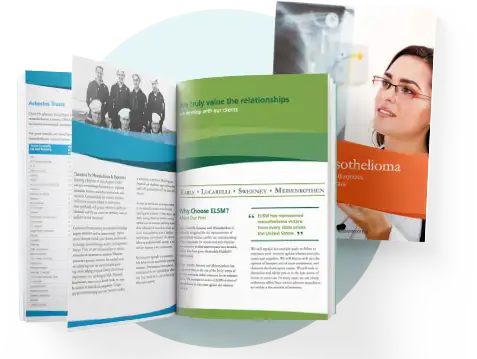Asbestos in Plaster: A Complete Guide
Asbestos was mixed into plaster and used in homes, schools, military housing and office buildings from the 1940s until the mid-1980s. It was a popular addition to construction materials like plaster because it was an affordable way to make them durable and fireproof.
But workers who handled asbestos in plaster, as well as those who currently work with it and their families, could be at risk of developing mesothelioma, asbestosis and other asbestos-related diseases.
What Is Plaster?
Plaster is a building material used for coating walls and ceilings because it provides a smooth, durable surface. It’s a versatile material that can be applied as a base coat or a finish coat. It’s made of gypsum, lime, sand and water—and during much of the 20th century, it also contained asbestos. This naturally occurring mineral is resistant to heat, fire and corrosion, making it a popular construction material. However, it’s also linked to asbestos-related diseases, including mesothelioma.
Is there asbestos in plaster today?
Because of the growing awareness of health risks, the use of asbestos in plaster declined beginning in the 1970s. New plaster doesn’t contain asbestos, but older buildings may still contain this potentially hazardous material. It’s important for anyone working with asbestos plaster to know about the possible risks.
Use of Asbestos Plaster
In the construction industry, asbestos in plaster was common during the 20th century, especially during the period of rapid growth in the 1940s through 1960s. It was used in ceilings and walls in residential, commercial and industrial buildings. Some companies known for asbestos plaster include:
- Georgia-Pacific Corporation
- Keene Corporation
- National Gypsum Company
- U.S. Gypsum Company
- W.R. Grace
- Flintkote Company
- Synkoloid Company
In the 1970s, the Environmental Protection Agency (EPA) became aware of the dangers of products with asbestos and began to regulate the industry. The EPA successfully banned several construction materials, including spray-on applications and wall-patching compounds.
The EPA also put strict rules in place for companies that made asbestos products. While it is still legal to import products containing less than 1 percent asbestos, you won’t generally find asbestos in plaster today. However, homes built before the mid-1980s could still contain asbestos in the walls and ceilings.
Plaster Walls
Asbestos plaster was often used as a coating for walls to improve strength, fire resistance and durability. In most modern construction, plaster is applied over drywall. “Lath and plaster asbestos” is an older method in which plaster was applied directly to a wood or metal frame, called a “lath.”
Many homeowners with homes built before the mid-1980s wonder if lath and plaster is dangerous, but they should know that both methods could have used asbestos in plaster.
Plaster Ceilings
Asbestos plaster was also frequently used in ceilings because it helped lower the risk that a fire would spread through the ceiling to other parts of a building. Plaster ceilings were typically installed by applying the plaster directly onto a wooden frame or a base layer of gypsum board, which is similar to drywall but thicker. Once the plaster had dried, it would be smoothed and finished to achieve the desired texture and appearance.
Stucco
Stucco is a cement-based plaster that’s applied over a framework of wire mesh on the exteriors of buildings. Asbestos in plaster used for stucco was common because it could improve its strength, flexibility and resistance to cracking.
Similar to other asbestos-containing materials, the use of asbestos in stucco has declined due to health concerns, and modern stucco typically doesn’t contain asbestos.

A complete guide delivered next day to your doorstep. Treatment Information, top doctors & cancer centers, financial assistance and more.
Health Risks of Asbestos in Plaster
Like other building materials, asbestos in plaster has been linked to serious illnesses, including mesothelioma. Mesothelioma is a rare form of cancer that affects the mesothelial cells, which are found in the lining of the chest, abdomen and other internal organs. When asbestos fibers are inhaled or ingested, they can become lodged in this lining, leading to inflammation, scarring and genetic damage to the cells over time.
Asbestos exposure is also linked to other diseases like:
- Other cancers: Asbestos exposure increases the risk of other types of cancer, including lung cancer and laryngeal cancer.
- Asbestosis: Asbestosis is a chronic lung condition that causes scarring and inflammation of the lung tissue. It leads to breathing difficulties, coughing, chest pain and respiratory failure.
- Other respiratory conditions: Asbestos exposure can also cause pleural plaques, pleural effusion and pleuritis, which involve inflammation and scarring of the lining of the lungs.
It takes decades to develop mesothelioma and other asbestos-related diseases, which can make it difficult to trace their cause. If you or a loved one has been diagnosed, an experienced attorney can help you determine who is responsible for your exposure and file a mesothelioma claim.
Who Is At Risk?
The EPA has stated that there’s no safe level of asbestos exposure. However, those who are continuously exposed to asbestos in plaster over longer periods are at higher risk, including these at-risk occupations for asbestos:
- Construction workers, especially drywall installers and plasterers, may come into contact with asbestos while installing, drilling, sanding or cutting into plaster surfaces.
- Electricians, plumbers and HVAC workers often need to cut into areas where asbestos in plaster may be present.
- Maintenance workers responsible for repairing or renovating older buildings may encounter asbestos in plaster walls or ceilings.
- Demolition workers can easily inhale asbestos fibers released into the air from many different construction materials, including plaster.
If You’ve Been Exposed to Asbestos in Plaster
If you or a loved one has been diagnosed with mesothelioma as a result of exposure to asbestos in plaster, you may have legal options, including:
- Asbestos trust funds: Some companies that made asbestos plaster have established trust funds to compensate victims. A mesothelioma attorney can help you file a claim.
- Mesothelioma lawsuits: Filing a mesothelioma lawsuit against the company responsible for your asbestos exposure can recover compensation for medical expenses, lost wages and other damages.
- Workers’ compensation: Laws vary by state, but if you were exposed to asbestos in plaster while on the job, you may be eligible for workers’ compensation benefits.
- Veterans’ benefits: If you were exposed to asbestos in plaster on ships or in military housing, you could be entitled to veterans’ benefits.
A mesothelioma attorney with extensive experience in asbestos lawsuits can help you determine how you were exposed and the best action to take. At ELSM Law, we have decades of experience with mesothelioma cases. We can guide you through the legal process, help you understand your rights and fight for the compensation you deserve.
Contact one of our advocates for a free case evaluation today.
Frequently Asked Questions
What health issues can asbestos in plaster cause?
Asbestos in plaster can cause severe health issues such as mesothelioma, lung cancer and asbestosis. Inhalation or ingestion of asbestos fibers from disturbed plaster could lead to these diseases, with symptoms often manifesting decades after exposure.
Can I sue for exposure to asbestos in plaster?
If you or a loved one has been diagnosed with mesothelioma or another asbestos-related disease that was caused by exposure to asbestos in plaster, you may be able to sue. Personal injury or wrongful death lawsuits allow you to seek compensation for damages such as medical expenses, lost wages and pain and suffering. A mesothelioma attorney can evaluate your case and guide you through the legal process.
Request a Free Case Evaluation
Request a free case evaluation now if you or someone you love has been diagnosed with mesothelioma. The evaluation will cost you nothing. Our lawyers will travel to visit you at your convenience or conference call with you over the phone. We understand how difficult a time this is for you and will assist in any way that we can. You can also call us toll-free at 1-800-336-0086 at any time.




